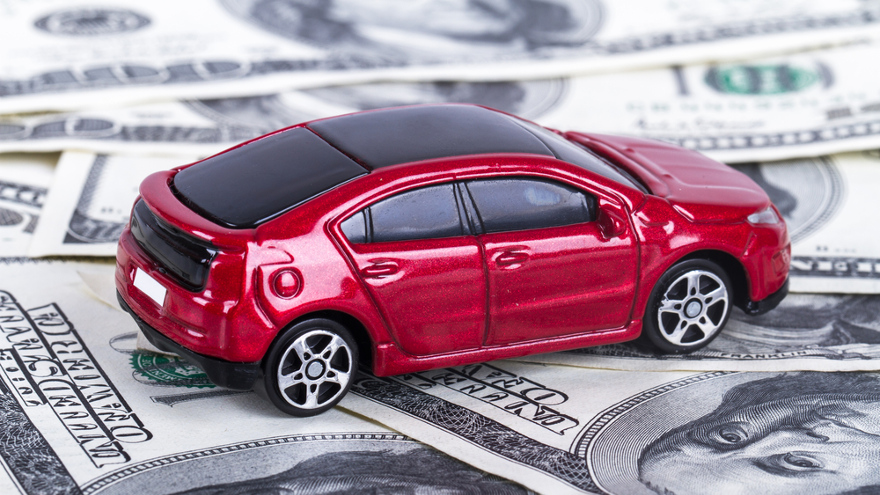COMMENTARY: How COVID-19 has re-written the auto-finance playbook, possibly forever

By subscribing, you agree to receive communications from Auto Remarketing and our partners in accordance with our Privacy Policy. We may share your information with select partners and sponsors who may contact you about their products and services. You may unsubscribe at any time.
TROY, Mich. –
Auto dealers around the country have embraced the unthinkable during the COVID-19 pandemic. They are now offering online sales. Roughly 85% of General Motors dealers were signed up to offer the manufacturer’s “Shop Click Drive” e-commerce program by May of this year, and dealerships ranging from the massive AutoNation chain to smaller, family-owned stores have all turned to e-commerce to spark sales while their customers were following nationwide stay-at-home orders.
Now, as parts of the country begin to re-open, while others are still contending with new outbreaks of COVID-19, it appears that online sales may just stick — even after the pandemic. With online car shopping already winning rave reviews for its smooth transactions, the ability to handle trade-ins and financing seamlessly over phone and internet, and the convenience of not having to leave home, many auto shoppers may never again set foot in a dealership.
This will be a problem for dealers and lenders that don’t embrace solutions that support a fully functioning on-line credit process or are not able to promote the sales of traditional Finance and Insurance products without the F&I in dealership office.
Upsetting the conventional sales channel
For starters, there is the issue of potential lost revenue. Dealerships can generate an additional $1,400 plus in profit on each new vehicle that passes through the F&I department, through a combination of insurance products, extended warrantees and lender provided incentives. While these options can still be offered in an online sales scenario, the sales process (and financing) is completely different in an online, check-the-box environment than it is in a face-to-face dialogue with an experienced F&I manager.
The bigger issue, though, is the effect a large-scale shift to online auto sales could have on automobile financing firms.
Most lenders rely on the dealer to submit credit applications for financing on behalf of the prospective car buyer. Over the last several years, we have seen a greater number of consumers seeking their financing outside the dealership, via on-line credit applications submitted to their lender of choice. This trend does not bode well for many non-captive lenders who are not tied into the dealers and/or OEM’s shopping tools, and those that do not have online credit application processes. Pre-pandemic, captive lenders captured roughly 64% of all dealer financing volume. In March through May of this year, that share jumped to 74%.
Subscribe to Auto Remarketing to stay informed and stay ahead.
By subscribing, you agree to receive communications from Auto Remarketing and our partners in accordance with our Privacy Policy. We may share your information with select partners and sponsors who may contact you about their products and services. You may unsubscribe at any time.
Need for innovation in new normal
What started as a stopgap measure to spur sales during the pandemic is rapidly morphing into a new normal where dealer investments in sleek showrooms, carefully choreographed sit-downs with F&I managers and even test drives all need to be reevaluated.
The first step in that process needs to be aligning streamlined digital connectivity between preferred lenders and dealership online sales channels. Both parties will have to expedite the transition from indirect to direct lending and promote their digital capabilities. If lenders want to maintain collaborative relationships with dealers, it’s going to require more than just regular phone calls, dealership drop-ins and competitive interest rates. To play in this space, regional banks, credit unions and other financing companies that want to do more business with dealers, need to have both the front-end application process and the back-end e-contracting functionality to integrate with dealership online sales channels.
Dealerships also need to spend time thinking about the effectiveness of their hastily launched online sales channels. Say what you will about auto dealer sales practices, the art has been refined over the course of decades to maximize volume and profitability. It is no accident that the F&I manager is often one of the best salespeople in the dealership. That same deliberate approach to maximizing customer engagement and converting browsers to buyers needs to be captured in the digital sales channel. As a starting point, that will include measuring online conversion and drop-off rates, optimizing the performance of critical points in the customer journey and leveraging data on everything from online shopping trends to time-of-day behavioral patterns to make the process as effective as it can possibly be.
Talk to enough auto dealers and they will say they are in the relationship business. Repeat customers, longstanding friendships and trust built up over many years all play a major role in maintaining sales volumes. In an all-digital world, those relationships risk being commoditized. Dealers and their financing partners need to put the work in now to make sure their unique brand values and strengths translate to digital because we’re going there whether they like it or not.
Jim Houston is managing director of consumer lending and automotive finance intelligence at J.D. Power.


